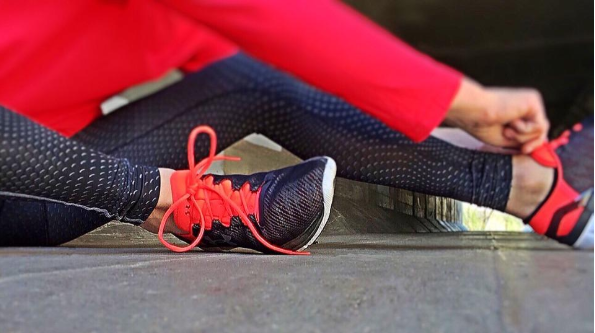
Gym workout plan: Do THIS type of exercise if you have been injured or have arthritis
Painful injuries or arthritis (or a combination of the two) can often put your gym routine on halt. You tell yourself you’ll eventually get back into the swing of things once your injury has healed, but as the days go on you begin to lose the discipline you’ve worked so hard to build up. If this occurs, even if the pain passes you may still find it challenging to start working out again.
This is a terrible position to be in which is why consistent exercise, even when you’re suffering from an injury or arthritis, is necessary to maintain your discipline. The key is to slow down your workout routine and listen to your body. If you feel you’re straining your body too much, then stop what you’re doing and either rest or end the routine right then and there.
Listening to your body
The number one rule of exercising while suffering from arthritis or an injury is to always listen to what your body is telling you. For example, if you lift weights and you start to feel pain in the same forearm where you recently tore a ligament than you should stop what you’re doing immediately.
If the pain is severe, then you should avoid exercising that part of your body for a while. If it’s a slight pain than you’ll have to use your best judgment about whether or not you want to outright stop or if you want to transition to an easier exercise.
No matter what course of action you decide to take remember this golden rule — always listen to your body.

Exercises you should do when you’re suffering from pain
We won’t give you any specific exercises to work on, but we will give you advice on the types of exercises you should focus on when you’re suffering from an injury or if you have arthritis.
As you begin your workout routine, test your boundaries by engaging in a range of pain-free movements that include gentle stretches. Ensure you’re moving your joints to alleviate any possible stiffness. Also, straighten and strengthen your posture by focusing on vital muscle groups. Just as importantly learn how to breathe deeply as you exercise. Wearing the proper workout clothes can help reamain flexable and comfortable.
Of course, the range of physical benefits you’ll gain from specific types of exercises are numerous (building your strength and balance for example), but there are also emotional benefits as well. The gains you make physically will mean nothing if you don’t have the willpower, strength, and confidence to keep pushing yourself when your workout routine starts to get tough.
With that being said, you should avoid high impact exercises that are known to put undue stress on the body such as running, jumping, contact sports, and complex exercises. These types of exercises can put a lot of force on your connective tissues, joints, and spine and will thus increase the possibility of you hurting yourself.
Low-impact is the way to go
The key to working out while suffering from an injury or arthritis is to keep the routine low-impact. Stick to exercises such as cycling, walking, swimming, dynamic pilates, and light strength training. These are all exercises that will give you a major benefit without any risk of worsening your condition or injury.
Many people feel that low impact training is not effective because of its lack of intensity. However, it’s an incredibly effective method of maintaining and strengthening your joints without adding too much physical stress.
Developing a workout routine that works for you
It all comes down to you finding the workout routine that works for you. The level of pain you may feel from arthritis or from an injury may not be nearly as severe as someone else who’s suffering from a similar condition. Identify your pain threshold and set your limits.
Remember, listen to your body during this process. Take it slow and steady and test your range. If you go about this process correctly, you’ll be able to develop the perfect workout routine to accommodate your injury or arthritis.
Featured Image Credit:Wokandapix / Pixabay
In Post Image Credit: princesscea / Pixabay